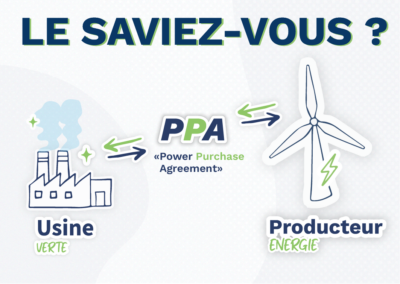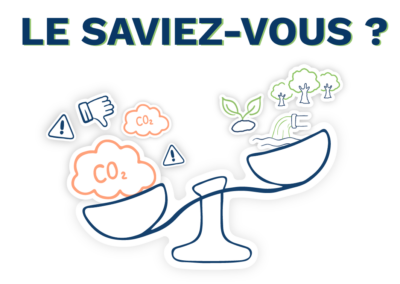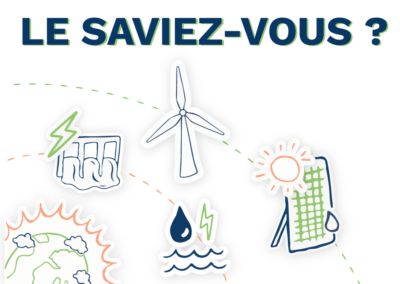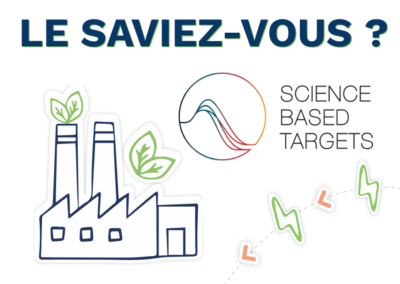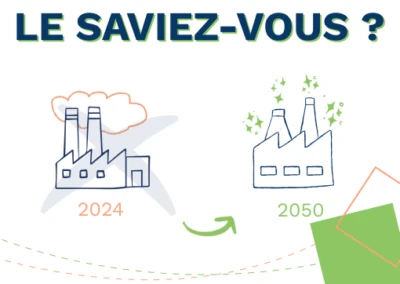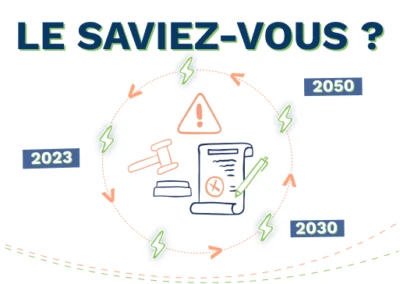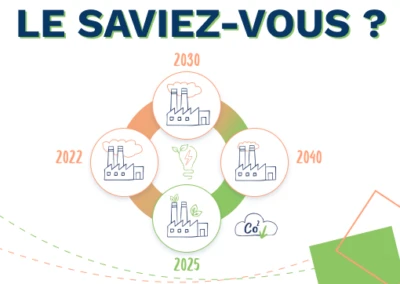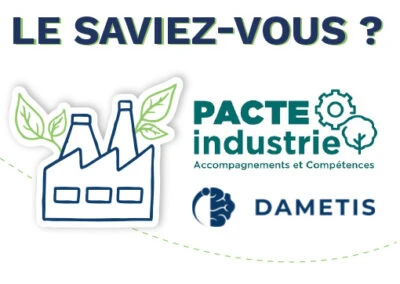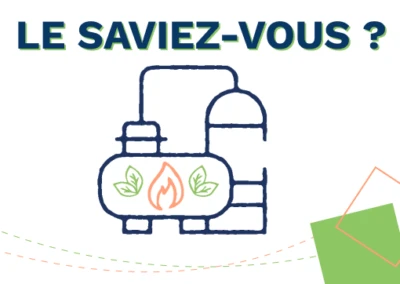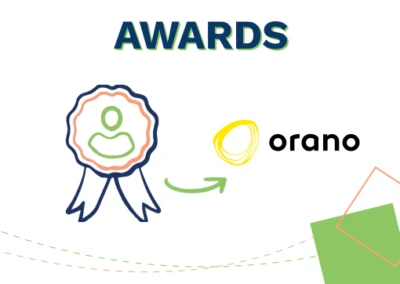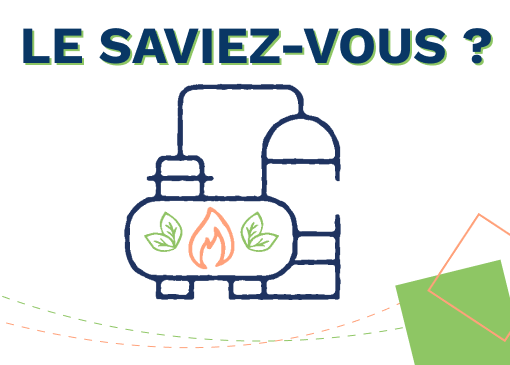
Biogas and biomethane: very promising prospects in France once again
What is methanization?
Methanization is a process based on the decomposition of so-called putrescible materials (with the ability to rot) by bacteria that act in the absence of air. This is known as fermentation or anaerobic digestion (in the absence of oxygen). Methanization is a phenomenon that occurs naturally, for example in marshes with gas emissions. But it can also be reproduced industrially in methanization units (or digesters) by letting organic materials ferment for several weeks in an oxygen-free digester.
The methanization process will generate two elements:
- biogas composed mainly of methane (50% to 70%), carbon dioxide, as well as hydrogen sulfide, and sometimes water in smaller quantities
- a by-product called digestate that can be used as a fertilizer for agricultural soils
This biogas can be converted into heat, used to generate electricity (or both simultaneously in a combined heat and power cogeneration unit).
The biogas can then be purified. During these operations, carbon dioxide is removed (decarbonization), hydrogen sulfide (desulfurization), and water (dehydration). It then becomes biomethane which has the same characteristics as natural gas. Biomethane can be injected into the gas network. It can also be used as a fuel for vehicles. This is referred to as bioCNG to distinguish it from CNG (compressed natural gas) when natural gas is used as a fuel. The possibilities are therefore multiple and can supply several sectors.
Both biogas and biomethane are renewable gases (also known as green gases) resulting from waste valorization.
A key challenge: input sources
There are a large number of input sources that can feed the methanization units:
- agricultural waste (manure, slurry, etc.)
- household and community waste (household biowaste, green waste, etc.)
- urban waste (biowaste from collective catering and supermarkets, etc.)
- agri-food industry waste (material losses in the process)
- industrial waste (industrial sludge, production rejects, etc.)
- sewage sludge (originating from wastewater treatment plants)
However, these inputs have very different methanogenic powers (i.e. the amount of methane released per ton at the outlet of the methanizer).
Indeed, the methanogenic potential varies greatly depending on the product and its level of putrescibility. One of the only exceptions is wood waste, as anaerobic microorganisms are unable to degrade lignin.
In the agri-food industry, methanogenic powers are equally diverse.
Example: One ton of oat straw produces three times more methane biogas than one ton of energy maize. Thus, oat straw finds a new and valuable use, after being used for bedding, fuel bricks, and livestock feed.
Sewage Treatment Plants: a financial opportunity to seize
The sludge from the wastewater treatment stages is an organic waste with high methane-generating potential. Methanization of this sludge allows the production of methane-rich biogas. Furthermore, methanization reduces the volume of remaining sludge by 20% to 50%, thereby reducing their management costs.
Moreover, the valorization of the produced gas can provide additional income to the facility through various public support mechanisms.
Development of biomethane and biogas: a priority for Europe
The European Union has made the development of biomethane production one of its priorities. This is for three main reasons:
- As a replacement for natural gas, biomethane contributes to Europe’s decarbonization strategy, with the aim of achieving carbon neutrality by 2050
- Reducing Europe’s dependence on imported fossil fuels, especially gas from Russia
- Positive impact in terms of local growth and employment
It should be noted that the priority is now clearly given to biomethane, rather than just biogas. Currently, Europe produces around 3.5 billion m3 of biomethane and approximately 17 billion m3 of biogas. Achieving the European objectives by 2030 relies on both the sustained development of biomethane and the conversion of current biogas production units into biomethane production units.
According to the European Biogas Association (EBA), Europe had 1,322 biomethane production installations in April 2023 (1,222 by the end of 2022), with a significant number located in France.
35 billion m³
of biomethane produced in Europe as the target by 2030
Source: European Commission
France is among the European leaders
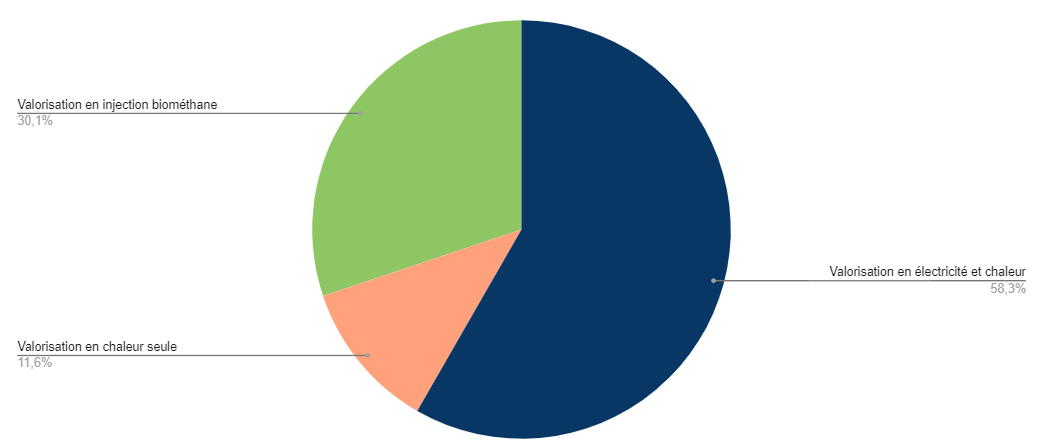
Source: MéthaFrance
The majority of installations (58%) produce electricity and heat through cogeneration from biogas. These include digesters, sewage treatment plants, and non-hazardous waste storage facilities. The number of these installations increased by 5% in 2022 to 994 units. The electricity production from biogas accounted for 576 MW of installed electrical power by the end of 2022.
Also in 2022, the production of biomethane for injection represented 30% of the total installations. By the end of 2022, France had 514 units, nearly double the number in 2020 (213 units). The majority of these units are agricultural (441 units), far ahead of sewage treatment plants (35 units).
This sector is experiencing very strong growth (+41% in 2022) with 149 units commissioned in 2022. France alone accounts for over 40% of the biomethane production units in Europe. France reported a biomethane production of 7 TWh in 2022.
By the end of 2022, nearly 900 projects were in the pipeline, which should allow the sector to continue its growth, provided effective support is provided by the authorities.
Public support mechanisms available for your project
At the same time, methanation units, like many industrial sites, have seen a surge in their costs due to inflation, the rise in the cost of certain raw materials, but especially due to the increase in electricity prices. In this context, many projects have faced difficulties in securing their financing, leading to a significant increase in projects in the pipeline.
In response, the authorities issued a new tariff order in June 2023, increasing the biomethane purchase price by over 10% to 15% (depending on the size of the sites). In addition, this price will be subject to indexation linked to energy price variations. Tenders are also being organized by the Energy Regulatory Commission, including the one launched in 2022 with three phases: 500 GWh/year in December 2022, 550 GWh/year in June 2023, and again 550 GWh/year to come in December 2023. For each phase, a quota of 200 GWh/year is reserved for projects producing less than 50 GWh/year. The winners will benefit from a purchase obligation contract for a duration of 15 years, providing breathing space and visibility to the sector.
What are the prospects for renewable gases in France?
The current Multiannual Energy Program (PPE) sets a target for biogas development of 14 TWh/year, including 6 TWh/year of biomethane injected in 2023. In 2022, 9 TWh of biomethane were injected into the network. Therefore, the targets for 2023 will already be largely exceeded. For 2028, the PPE’s target range is 24 to 32 TWh of biogas, including 14 to 22 TWh of biomethane injected into the networks.
According to the Ministry of Energy Transition, by the end of December 2022, 876 biomethane injection projects were in the queue with a production capacity of 15.8 TWh/year. The commissioning of projects currently in the queue would already exceed the targets for 2028.
But a new PPE – eagerly awaited by all stakeholders – is currently being prepared. It is expected to significantly increase the targets for biogas and biomethane development in France. Once published, we will keep you informed of the renewable energy development objectives in France in an upcoming article.
In the meantime, feel free to contact us to discuss the best opportunities for your project.









